Paolo Kernahan, fresh from completing the second Bush Diary DVD, suggests we take a closer look at our natural environment:
Three men, loaded like mules with camera equipment and supplies, stand at the forest’s edge. The romanticism of producing a local nature documentary series in Trinidad and Tobago got them this far. They would have to dig deep for the endurance to carry them the rest of the way.
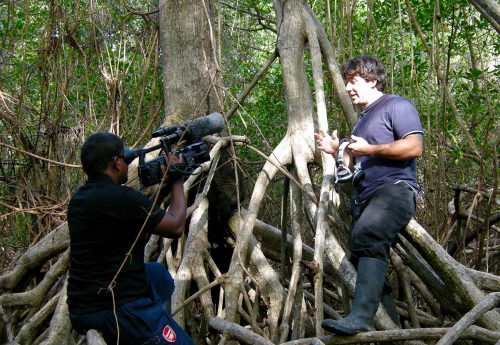
(Courtesy Bush Diary 2)
Powered by dreams of capturing video of the elusive river otter in the wild, the small television crew pushes through the six-hour slog into the Brasso Seco forest in the Northern Range.
The sun slips lazily behind the mountains as they wait in absolute silence on a river bank for the otters to put in an appearance. Unfortunately, something else shows up. Some insect phantasm, that can neither been seen nor swatted, attacks ferociously.
Frenzied itching drives all three men down to a river too shallow to grant a merciful suicide by drowning. There would be no relief. And, while there were lots of tracks and trails of half-eaten crayfish, there would be no river otters either.
This was the tortured birth of the Bush Diary documentary series, a chronicle of adventures in the wilds of Trinidad and Tobago.
The crew later learnt the insect behind their unremitting agony was the dreaded bête rouge. A small red mite nearly invisible to the naked eye, it rests in the forest undergrowth until a food source like a hapless television crew passes by.
The trauma inflicted by that little arachnid assassin would be salved, though, by all the amazing creatures eventually captured on camera in the Brasso Seco forest.
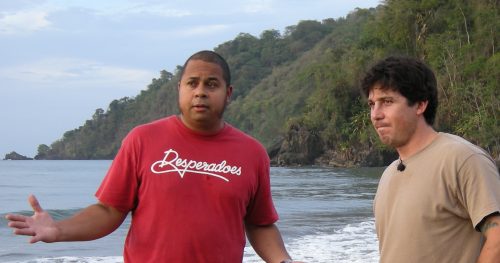
Producer Paolo Kernahan (L) and Presenter Robert Clarke (R)
Bush Diary with Robert Clarke is a guided tour of ourselves, a fearless romp through the fascinating nature trails, wildlife sanctuaries and rugged beauty that fill the frame of this many-layered country unlike any other in the Caribbean.
The neo-tropical porcupine, white-bearded manakin, the silky anteater; with an expansive cast of characters, Bush Diary illuminates lesser-known corners of Trinidad and Tobago. The series connects citizens with the remarkable creatures and places often unheralded in a country associated more with Carnival, beaches and rum cocktails.
The series was broadcast on local television stations CNMG and CNC3 and is also available on DVD. The first DVD was released in 2012 and features the episodes “Caroni Swamp”, “Avian Wonders”, “Mangroves” and “Forest Fires”.
The second Bush Diary DVD, which was sponsored by Atlantic LNG, was launched just three weeks ago. It contains the episodes “Leatherback Turtles”, “Nariva Swamp” and “Wildlife Rescue”. There are also featurettes on Orange Valley, Kernaham Village and Turtle Conservation.
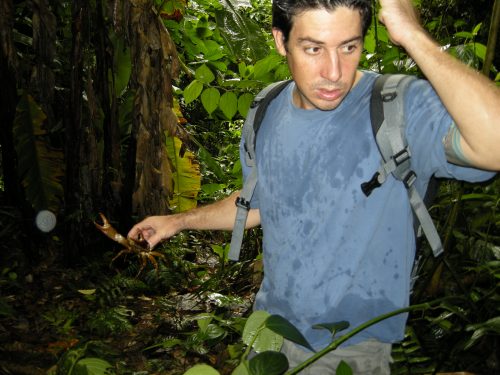
The Bush Diary team pulls together Robert Clarke, Paolo Kernahan, Narrisa Mandol and Rajnauth Lal, all of whom have had long careers in the media. Spurred on by a belief that there are important stories about Trinidad and Tobago largely side-stepped by traditional media houses, this committed team resolved to do something about it.
So the slacks and hard shoes were switched out for rubber boots and khaki shorts. The polish of the citified reporter was ditched for the disheveled finish of an exhausted hiker replete with a bouquet of sweat and Anthisan.
People can’t be expected to cherish something they know little or nothing about.
While government bears responsibility for policy and enforcement of environmental protection, sustained education can produce enlightened citizens who understand the relationship between a healthy environment and a healthy society.
Bush Diary also offers insight into how apathy towards the environment can ultimately affect our quality of life. For example, snakes are killed on sight in Trinidad and Tobago because of irrational fears and lingering superstitions. But snakes eat rats and significant declines in the snake population allow these disease-carrying rodents to multiply unchecked.
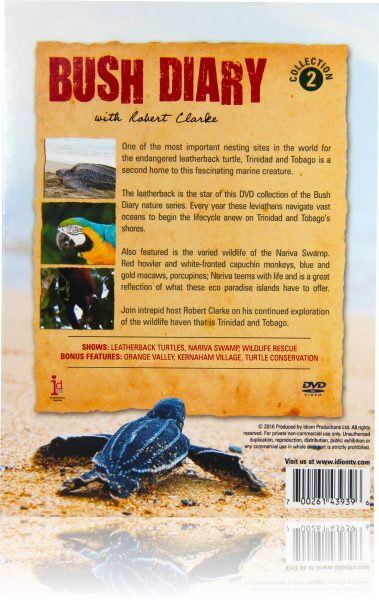
Then, of course, there’s the tremendous potential of ecotourism to consider. There are countless hidden nature nooks all over the country. Such natural assets provide fertile ground for community-based businesses like B&Bs, tour guiding operations, restaurants, etc.
But for these businesses to thrive, there must be something for visitors to see. Wildlife must be conserved if we expect them to serve as attractions.
Additionally, beyond hosting visitors and ferrying them around the islands, citizens need to know what they are talking about when in the company of curious tourists.
Selling our islands as a bucket-list destination means knowing everything there is to know about what makes this place special. Maximizing the ecotourism potential of this country will in turn ensure the survival of all species for future generations.
Editor’s Note: You can order the Bush Diary DVDs at idiomtv@gmail.com. The Idiom team will personally deliver the DVDs to your home or work place.
The DVDs are also available at Paper Based Bookshop at The Normandie, St Ann’s, Rainy Days at Ellerslie Plaza, Maraval and Signature Stationery and Business Works at Valpark Plaza, Valsayn.
Want to share your thoughts with Wired868? Email us at editor@wired868.com.
Please keep your letter between 300 to 600 words and be sure to read it over first for typos and punctuation.
We don’t publish anonymously unless there is a good reason, such as an obvious threat of harassment or job loss.
 Wired868 Wired868 for smart sport news and opinion
Wired868 Wired868 for smart sport news and opinion
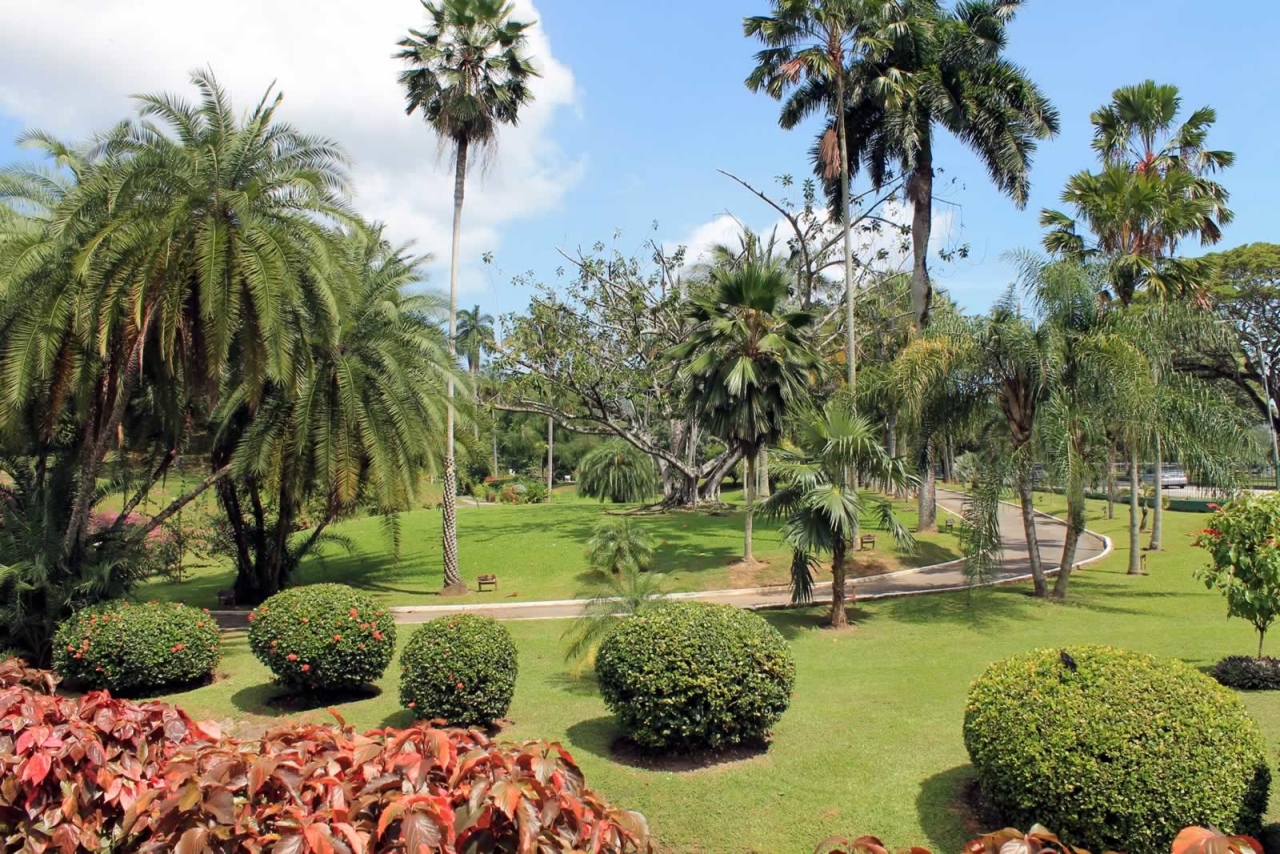






This was a good read. I would love to make a trek like this… Apart from the “bête rouge” encounter! Lol
A really good read Paolo Kernahan… Keep up the great job too Narrisa and the rest of the gang!
Awwh, thanks Lasana! 🙂
This DVD is weighed in GOLD!!!!
Thanks Rewen, we always appreciate your kind words!
Rewen, to hear you say that means a lot to the Bush Diary team who worked tirelessly on this project.
This reminds me of Cross Country with Ralph Maraj
Any chance of the show being aired on local tv again?
Unfortunately, no. We have to pay to broadcast the shows so that is definitely not in the cards 🙁
Jacqueline, no unfortunately we will not be doing any more shows to be broadcast on television. The cost is simply too prohibitive.
Yayyyyyy
Guy, go down d islands and report on the amount of rubbish it have on all the islands. It’s insane
Got my copy today…thanks Paolo!
You’re welcome. Hope you enjoy watching it.
Paolo Kernahan certainly; just as I did with the other episodes. I’m actually using them to teach my daughter about nature and our country.
Paolo Kernahan How to order?
Jones Imam Well that is precisely our intention behind the DVDs. To hear that you are using it as a teaching tool for your daughter makes it all worthwhile!
Debbie Ramona Hansraj you can send an email with your contact information to idiomtv@gmail.com.
Ok thanks
Good move..
When one sees how excited visiting birders are when they are on tour in Trinidad we may get a glimpse of what we can offer in Ecotourism. If we keep shooting, currying,or stewing everything that isn’t human then soon there would be nothing to see. Hunters who can name rare species of birds visiting Trinidad are still killing them on sight.
We get excited to hear a bird that has been seen twice in the last 30 years making an appearance here and then we see it dead in a photo.
I take it that the DVD’s are so prohibitively priced that no sane editor/producer/advertiser/letter writer (take your pick) would even contemplate including that information is a piece that is this informative. After all, this whole project is about conservation, including of life, and such info might just kill the reader, no?
Or, at the very least, his/her enthusiasm for the undertaking.
Hello Mr. Best, the omission of the price is not as sinister as you may think. I have worked in both the broadcast and print media and, when doing a story on a product which is deemed newsworthy, we never included prices. It may be a tradition that came about because editors wanted to maintain some sort of line between a story and an ad. The cost is TT$200 per DVD. As to prohibitive pricing, actually a lot of thought went into determining the price of our DVDs…we attached a TT$200 figure because it allowed us to recoup our manufacturing, shipping, customs and VAT costs while still being affordable to average consumer.